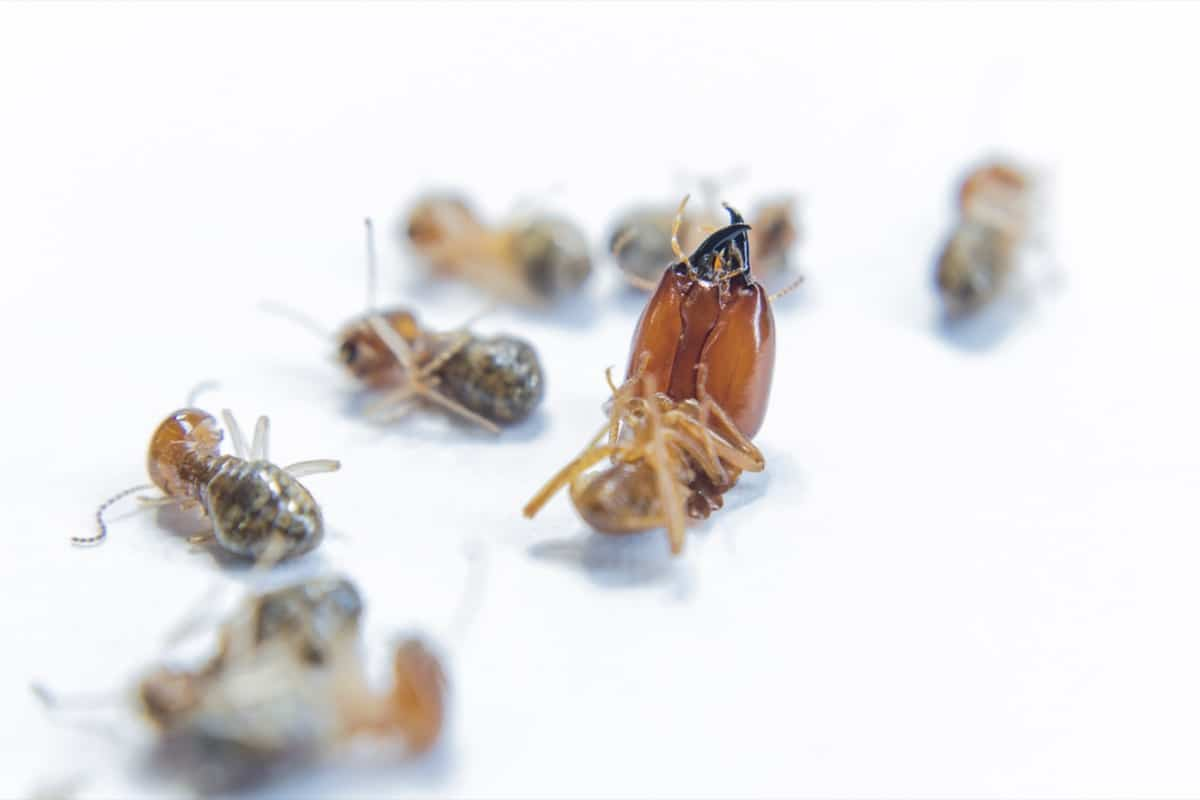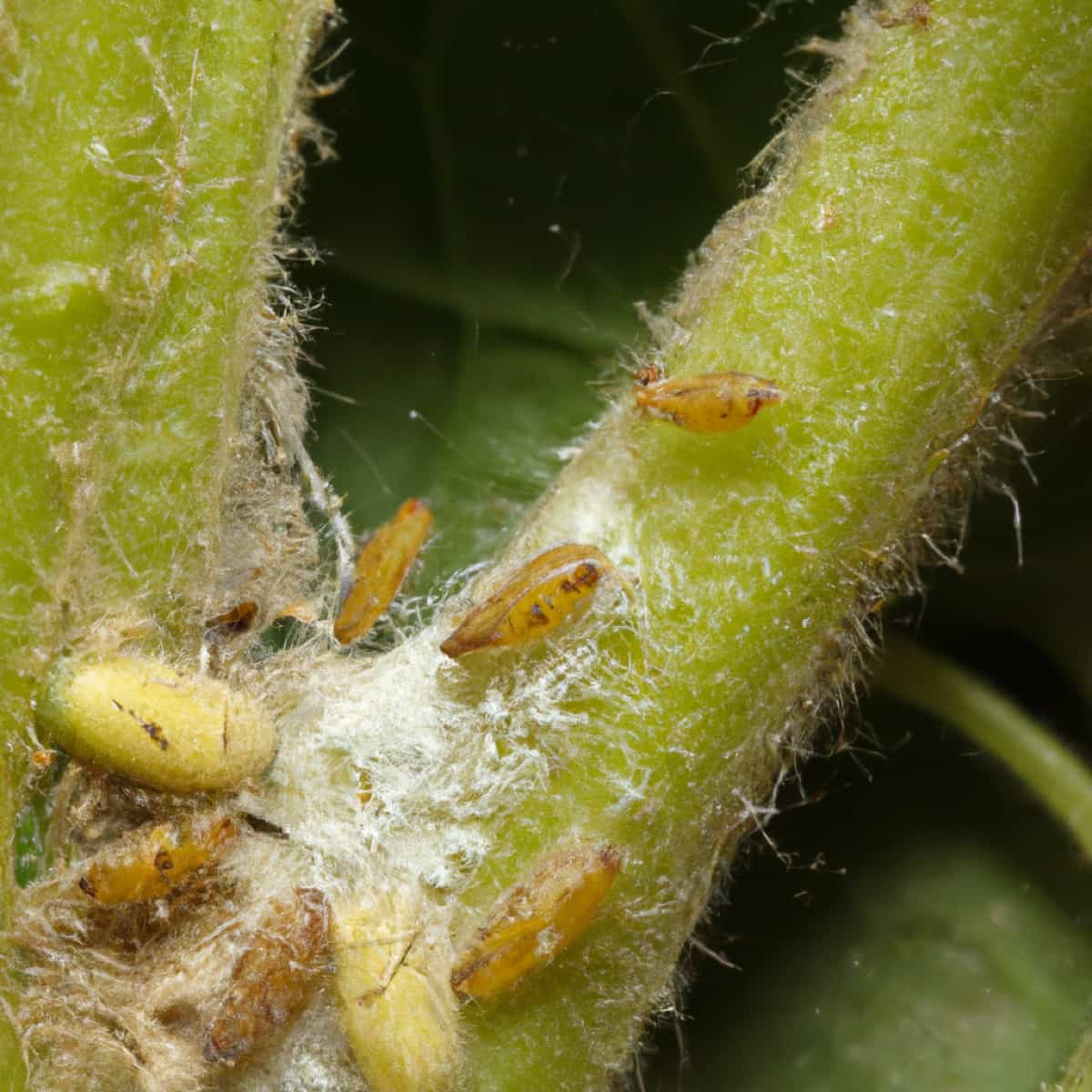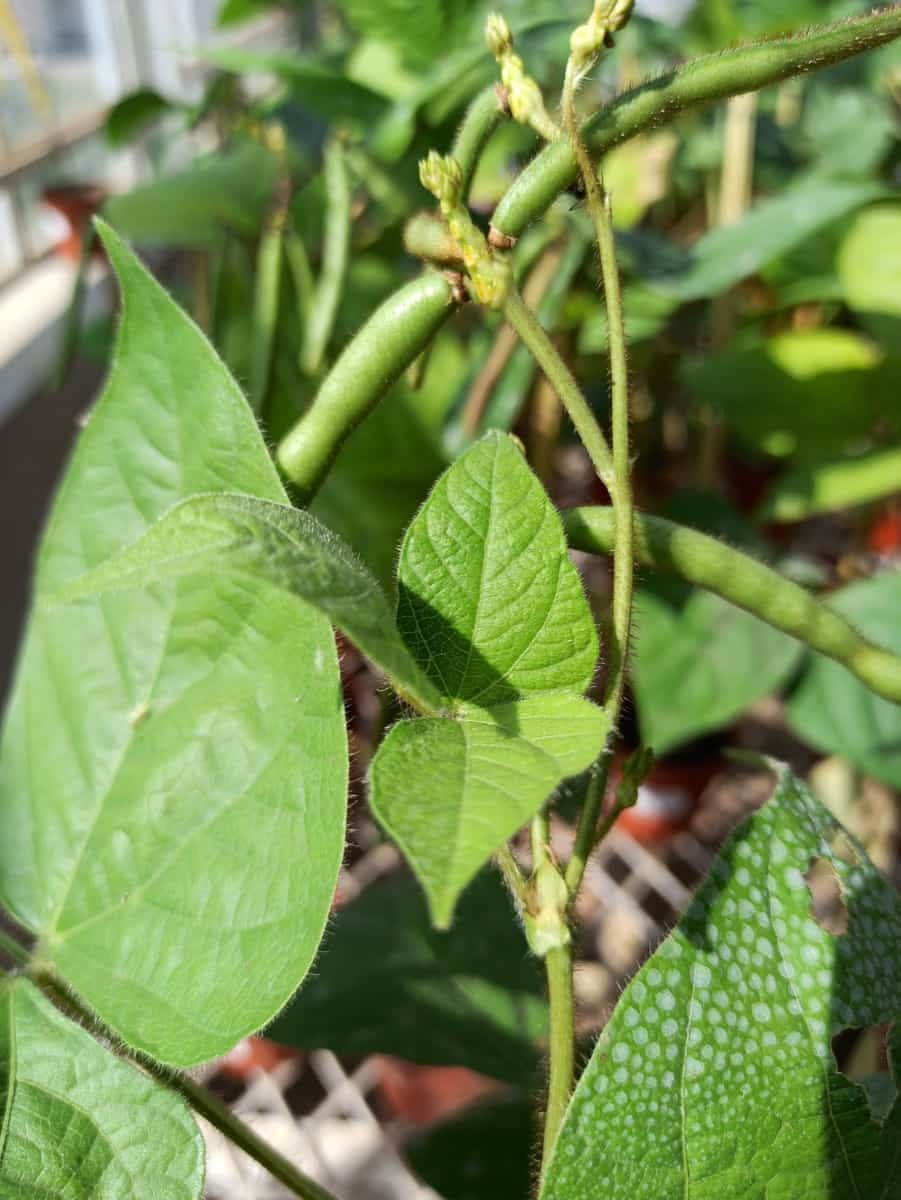Termites and thrips are two common pests that can cause significant damage to green gram crops. Termites are known for causing underground damage to crops, while thrips are known for damaging above-ground plant tissues. This blog will discuss the identification, causes, and management of termites and thrips in green gram crops.
About Termites: Termites are social insects that belong to the order Isoptera. They are known for their ability to cause damage to buildings, wooden structures, and crops. In agriculture, termites, including Green Gram, can significantly threaten crops. Termites are known for their ability to consume cellulose, which is found in plant cell walls. Termites can cause significant damage to Green Gram crops, including stunted growth, reduced yield, and even plant death.

About Thrips: Thrips are small, slender insects that belong to the order Thysanoptera. They are known for their ability to damage crops, including Green Gram. Green Gram termite and thrips control use cultural, physical, and chemical methods. Chemical ways use pesticides on crops or soil treatment to control the disease. Thus, environmentally friendly and sustainable integrated pest control (IPM) strategies are suggested. IPM can lower pesticide use and protect Green Gram crops.
Termites and Thrips Management in Green Gram
Identification of Termites and Thrips
Termites can be identified by their small, white, or brown bodies and straight antennae. They are often found in soil or wood and can cause significant damage to structures if left untreated. Conversely, thrips are tiny, winged insects that measure only a few millimeters in length. They have distinctive fringed wings and feed by piercing plant tissue and sucking the plant sap. Thrips can cause damage to a variety of crops, including green gram, and can also transmit plant viruses.
The Life Cycle of Termites and Thrips
The life cycle of termites begins with the queen laying eggs, which then hatch into nymphs. Nymphs go through several molts before developing into adults. Depending on the species, the termite colony may have different types of individuals, including workers, soldiers, and reproductive males and females. In contrast, thrips eggs are typically laid in plant tissue, and the resulting nymphs feed on plant sap before developing into adults. Thrips are tiny, winged insects that go through several stages of development.
Their eggs are almost impossible to see and are laid in plant tissue. The nymphs are small and have short antennae and wing buds but do not feed. The adults are fully developed and have wings with unique structures. They are attracted to yellow and white colors and can fly, making them more mobile than immature stages. Thrips adults can live for several weeks, and females lay their eggs on plant tissue or in the soil. Thrips populations can quickly grow to high numbers under favorable conditions.
Damage Symptoms of Termites and Thrips
Symptoms
Termites can cause significant damage to green gram plants, leading to stunted growth and reduced yield. Signs of termite damage include drooping leaves that eventually wither and dry up, making the plants easy to uproot. In severe cases, termites can cause entire plants to collapse.
In case you missed it: Leaf Webber Management in Green Gram: Symptoms, Identification, Treatment, Chemical, Biological, Natural, and Organic Control

SympThrips can also cause damage to green gram plants. Thrips feed on plant sap, causing silvery patches or streaks on the leaves. These patches can occupy a large portion of the leaf surface, leading to reduced photosynthesis and water loss. Thrips can also spread plant pathogens through their feeding, further damaging the plant. In severe cases, thrips damage can cause the leaves to curl or become distorted, leading to reduced yield.
Yield Loss due to Termites and Thrips on Green Gram
Termites and thrips are insect pests that cause yield loss in green gram or mung bean crops. The annual yield loss due to these pests has been estimated at 30%. This can result in significant economic losses for farmers and reduce the availability of this important food crop for human consumption.
Termites and Thrips Management in Green Gram by Cultural Method
- Crop rotation Avoid planting green gram in the same field repeatedly to reduce the buildup of pests.
- Sanitation Remove crop residues and weeds that can harbor pests.
- Soil preparation Proper tillage can help disrupt termite tunnels and expose them to predators.
- Companion planting plants, such as marigolds, can repel thrips.
- Early planting before peak pest activity can help reduce pest populations.
- BlueTraps Sticky traps can be used to monitor and control thrips populations.
Termites and Thrips Management in Green Gram by Biological Method
- Parasitoid such as Ceranisus menes is a parasitic wasp that lays their eggs in thrips. The developing wasp larvae kill the thrips, reducing their population.
- Several predators can be used to control thrips, including predatory mites, predatory thrips, Oligota spp., Orius spp., hoverflies, and mirid bugs. These insects feed on thrips, reducing their numbers.
- Release of natural enemies: Natural enemies can be released into the crop to control thrips. For example, predatory mites can be introduced into the crop to feed on thrips.
Termites and Thrips Management in Green Gram by Chemical Method
- Soil application: where termites are regularly present, the soil can be mixed with pesticides such as endosulfan 4D, quinolphos 1.5 D, chlorpyriphos 5 D, or BHC or 10 D at a rate of 35 kg/ha at the time of sowing.
- Foliar application: Thrips are present in the standing crop. Pesticides such as endosulfan 35 EC or chlorpyriphos 20EC can be diluted with water and applied to the crop. This mixture can be broadcast over 1 ha of land, followed by a light irrigation.
Termites and Thrips Management in Green Gram by Organic/Natural Method
- Neem oil can be applied to the crop to repel thrips and other pests.
- Garlic extract: Garlic extract can control thrips by disrupting their feeding behavior.
- Botanical extracts: Some botanical extracts, such as those from marigolds or tobacco, can repel or kill thrips.
- Compost use of vermicompost can improve soil health, making the crop more resistant to pests and diseases.
- Rotating crops can help break pest cycles and reduce pest pressure.
Preventive Measures for Control of Termites and Thrips
- Use certified disease-free seeds to reduce the risk of pest infestations.
- Monitor the crop regularly for signs of pest infestations.
- Use barriers such as physical or chemical barriers to prevent termite infestations.
- Use crop rotation and intercropping to reduce pest pressure.
- Use resistant cultivars that are less susceptible to pest infestations.
In case you missed it: Green Leafhopper Management in Green Gram: Symptoms, Identification, Treatment, Chemical, Biological, Natural, and Organic Control

Conclusion
Termites and thrips can cause damage and yield loss in green gram crops. Effective management strategies include chemical, biological, natural, and organic control methods and preventive measures to reduce the risk of pest infestations.
- Deworming Schedule for Dogs/Puppies: A Beginners Guide
- How to Prevent and Control Parasites in Goats
- Beneficial Insects in Pest Management
- Natural Solutions for Pest Control in Flower Gardens
- Types of Fungicides Used in Agriculture
- Common Issues in the Fruit Development Stage of Pomegranate Farming
- Fruit Development Issues in Papaya: Easy Solutions and Treatment
- Soil-Borne Diseases and How to Protect Your Plants
- Practices to Prevent Disease Spread in the Garden